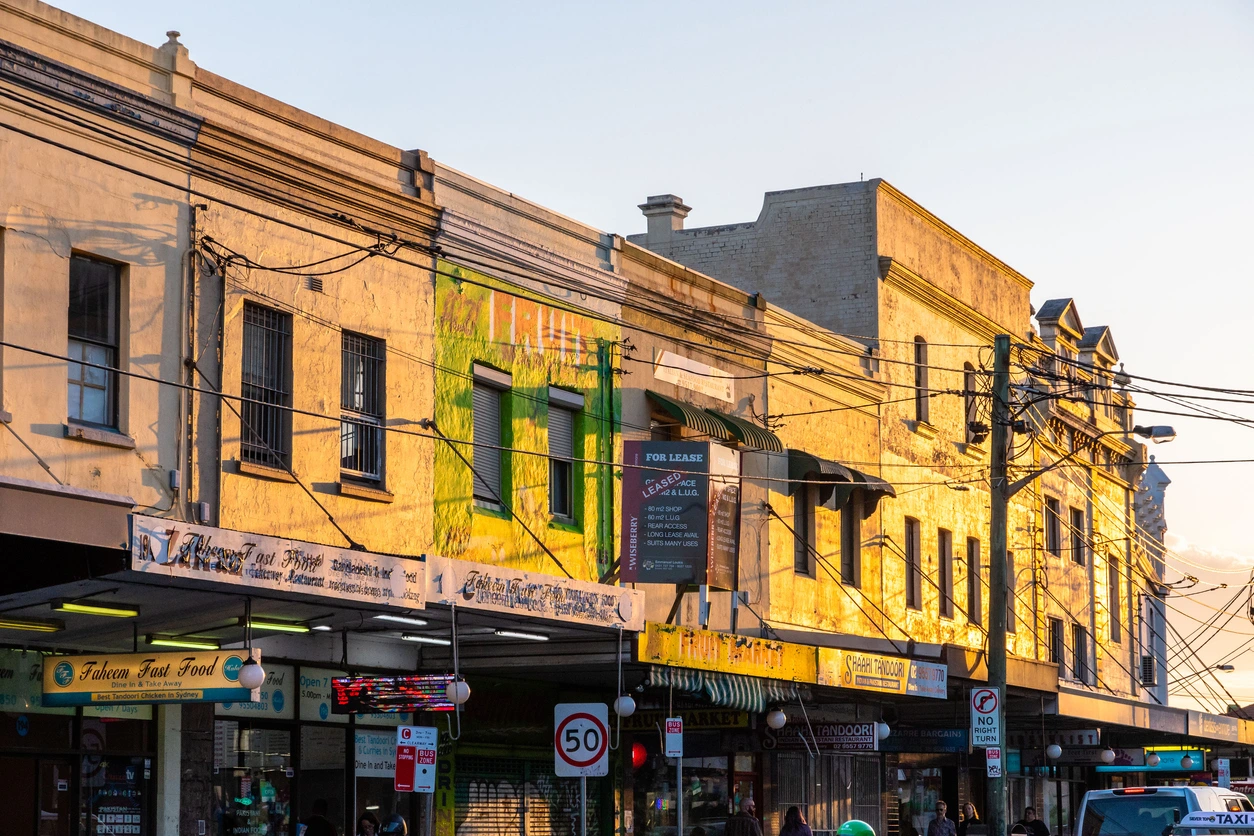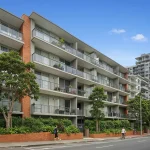Inner West property rental trends are shaping investor strategies and landlord decisions as Sydney’s market enters 2025 with robust demand and tight supply. Understanding forecasts, price shifts, vacancy movements, and investment patterns empowers landlords and property investors to maximise returns and minimise vacancies. This guide delivers actionable insights on market projections, rental yields, tenant preferences, regulatory changes, and suburb-specific dynamics. You will learn:
- Key rental market forecasts through 2030 and infrastructure impacts
- Comparative analysis of rental prices, yields, and top-performing suburbs
- Current vacancy rates, tenant demand drivers, and vacancy reduction tactics
- Investment trends, two-bedroom property potential, affordability, and interest rate influences
- NSW rental law updates, property management best practices, and choosing expert support
- Hyper-local rental characteristics across major Inner West suburbs
- Adapting to pet-friendly, move-in ready requirements, and presentation strategies
By blending market data with Onside Property Group’s Inner West expertise, this article equips landlords, investors, and property managers with the intelligence to navigate Sydney’s most dynamic rental corridor.
What Are the Key Rental Market Forecasts for Inner West Sydney in 2025 and Beyond?
Inner West Sydney’s rental market forecasts define growth trajectories by projecting rental increases, demand pressures, and infrastructure-driven value uplifts. Analysts anticipate median apartment rents to rise by approximately 24 percent between 2025 and 2030, driven by population growth and limited new supply. These forecasts underline how demand outstripping supply enhances landlord returns and justifies forward planning for portfolio acquisitions and rent reviews.
To visualise core forecast drivers, consider the following list of factors shaping Inner West projections:
- – Population Growth: Expected addition of 650,000 Sydney residents by 2034 boosts rental demand in established suburbs.
- – Infrastructure Investment: Sydney Metro West connectivity reduces commute times, raising rental appeal for linked precincts.
- – Supply Constraints: Limited greenfield sites and heritage restrictions maintain tight vacancy rates, sustaining rent growth.
- – Economic Conditions: Interest rate movements and wage growth influence tenant affordability and investor sentiment.
These drivers create a tight market where strategic property management enhances yield and reduces vacancy risks through proactive rental adjustments and tenant screening. Examining each driver clarifies how long-term forecasts translate into practical landlord actions.
How Will Population Growth Influence Inner West Rental Demand?
Population growth in Sydney fuels demand for Inner West properties as new residents seek proximity to the CBD and lifestyle amenities. Projected increases of more than 650,000 people by 2034 translate into higher occupancy rates, particularly in suburbs with established transport links. This demographic influx intensifies competition for rental stock, allowing landlords to improve rent progressively while maintaining low vacancy periods. At the same time, landlords should anticipate evolving tenant profiles, young professionals, downsizers, and families, requiring diverse property types and amenity offerings, which influences acquisition and refurbishment strategies.
What Impact Will Sydney Metro West Have on Inner West Rental Values?
Sydney Metro West introduces a rapid rail corridor linking key Inner West hubs with Parramatta and the CBD, directly enhancing rental appeal. Properties within walking distance of new stations typically see value uplifts of 5–10 percent as accessibility improves. This mechanism supports landlords in repositioning assets through minor upgrades to capitalise on anticipated demand spikes. Moreover, improved connectivity shifts rental catchment zones, enabling investors to consider emerging precincts that were previously overlooked, thereby diversifying portfolios.
Which Inner West Suburbs Are Poised for Gentrification and Rental Growth?
Inner West gentrification hotspots offer superior growth potential as urban renewal and amenity enhancements converge. The table below highlights three suburbs with high forecasted rental appreciation:
| Suburb | Anticipated Rent Growth | Key Driver |
| Erskineville | +12% by 2028 | Heritage renovations and café culture |
| Marrickville | +10% by 2029 | Major retail and arts precinct upgrades |
| Newtown | +9% by 2030 | Student and creative demographic expansion |
Each suburb’s combination of cultural renewal and infrastructure investment presents landlords with opportunities to enhance rental yields through targeted improvements and tenant engagement strategies.
How Are Rental Prices and Yields Trending in Inner West Sydney?
Rental prices and yields in Inner West Sydney reflect the balance between strong tenant demand and constrained stock levels. As of September 2025, median house rent sits at $780 per week, while unit rent averages $750 per week. Gross rental yields hold near 2.7 percent for houses and 4.0 percent for units, with some inner-city precincts offering unit yields above 4.2 percent. Tracking these trends enables investors to compare asset classes and optimise portfolio composition.
Sydney Private Rental Investment: Yields in Outer Western Suburbs
We analyse private rental housing as a tenure share to understand the geographies of rental yield and private rental investment in Sydney: the outer western and south western suburbs, which are characterised by lower property values and higher rental yields.
The analysis of rental yields in Sydney, particularly in outer western and south western suburbs, highlights areas with lower property values and higher rental returns, which is a key consideration for investors seeking optimal returns.
What Is the Median Rent for Houses Versus Units in Inner West Sydney?
The contrast between house and unit rents informs investment decisions on property type allocation. The following table summarises current figures:
| Type of Property | Median Weekly Rent | Year-on-Year Change |
| Houses | $780 | +8.4% |
| Units | $750 | +14.3% |
How Can Landlords Maximise Rental Yields in Inner West Investment Properties?
Landlords improve rental yields by combining strategic enhancements with market-aligned rent reviews. Key tactics include:
- Upgrading energy-efficient appliances and insulation to justify premium rent.
- Offering pet-friendly features such as protected outdoor areas to broaden tenant pools.
- Staggering lease renewals to capture market peaks.
Implementing these measures enhances yield by up to 0.5 percent annually and reduces turnover costs, reinforcing long-term portfolio performance.
Which Suburbs Offer the Highest Rental Yields in the Inner West?
Identifying high-yield precincts supports targeted acquisitions. The table below compares leading suburbs:
| Suburb | Gross Yield | Typical Vacancy Rate |
| Summer Hill | 4.2% | 0.9% |
| Petersham | 4.0% | 1.1% |
| Dulwich Hill | 3.9% | 1.2% |
What Are the Current Vacancy Rates and Tenant Demand Trends in Inner West Sydney?
Inner West vacancy rates have fluctuated between 1.0 percent and 1.8 percent over 2024–2025, reflecting persistent demand and supply limits. A vacancy rate below 2 percent signals a landlord-friendly market where swift tenant placement and rent benchmarking are critical. Concurrently, tenant demand trends shift toward modern amenities, pet inclusion, and ready-to-move-in properties, which influences maintenance and presentation priorities.
Western Sydney Rental Investment: Disadvantaged Areas and New Landlords
New landlords in Western Sydney are increasingly investing in rental properties located in disadvantaged areas. This analysis also contributes to understanding the landscape of financialised rental investment opportunities for sustainable development, and the generation of further rental income.
The trend of new landlords investing in rental properties, particularly in areas that might be considered disadvantaged, is a notable aspect of the broader rental market landscape, influencing investment strategies and income generation.
How Have Vacancy Rates Changed in Inner West Sydney in 2025?
Vacancy rates tightened to around 1.6 percent in May 2025 after peaking at 1.8 percent earlier in the year, demonstrating a rebound following slight easing. This contraction underscores the importance of proactive lease marketing and competitive pricing. Landlords and property managers who leverage timely data can adjust rent and incentives rapidly to sustain occupancy above 98 percent.
What Do Tenants in Inner West Sydney Look for in Rental Properties?
Inner West tenants prioritise convenience, condition, and community features when selecting rentals. A list of top tenant preferences includes:
Move-in ready interiors with contemporary finishes.
Secure parking or storage facilities.
Proximity to cafés, parks, and transport hubs.
Addressing these demands through targeted upgrades and marketing can improve enquiry rates by up to 30 percent, reflecting tenants’ willingness to pay premiums for quality and convenience.
What Strategies Can Landlords Use to Minimise Vacancy Periods?
Reducing vacancy periods relies on combining rapid marketing with tenant retention incentives. Effective strategies involve:
- Offering lease renewal incentives such as minor maintenance upgrades.
- Utilising professional photography and virtual tours to accelerate leasing.
- Adjusting rent incrementally to reflect market trends without deterring renewals.
These actions sustain occupancy and reinforce tenant satisfaction, ensuring rental income remains consistent.
What Are the Latest Property Investment Trends in Inner West Sydney?
Investment trends in Inner West Sydney pivot around affordability, property type preferences, and cost of finance. Two-bedroom apartments have emerged as a sweet spot for yield and capital growth, while rising prices drive investors toward emerging precincts and value-add refurbishments. Changing interest rates in early 2025 have also revived investor sentiment, making borrowing more accessible and fuelling purchasing activity.
Australia’s Private Rental Sector: Investment, Policy and Regulation
To provide context for our discussion of private rental policy, this chapter first profiles Australia’s rental sector, the stock of private rental dwellings, and the residents occupying this tenure. It then examines tax and other policy measures that influence private rental property investment (the supply side). Subsequently, it addresses regulatory policy affecting the consumer experience of private renting, specifically the governance of landlord–tenant relationships.
Understanding the broader context of Australia’s private rental sector, including its investment landscape, policy influences, and regulatory frameworks, is crucial for a comprehensive view of property investment trends.
Is Investing in Two-Bedroom Properties a Smart Choice in Inner West Sydney?
Two-bedroom properties balance capital outlay and rental income effectively, delivering yields around 4.0 percent with strong tenant demand. This property type appeals to young couples and downsizers, ensuring steady occupancy. Investors benefit from lower per-unit acquisition costs compared with larger homes, while capturing a broad tenant segment seeking affordability and space.
How Are Affordability Challenges Shaping Investment Decisions?
Affordability constraints in Inner East and Eastern Suburbs redirect investor and tenant interest toward Inner West Sydney, where relative value remains. Rising entry costs prompt investors to seek value-add opportunities, such as kitchen refurbishments or bathroom upgrades, to boost asset value and rental premiums. This approach supports higher total returns by leveraging renovation capital rather than relying solely on market-driven appreciation.
What Role Do Interest Rate Changes Play in Inner West Property Investment?
Interest rate cuts in early 2025 have improved borrowing capacity, increasing investor activity and lifting property values. Lower financing costs enable portfolio expansion and refinancing of existing holdings at reduced rates. As a result, investors can allocate saved interest expenses toward property improvements or accelerated debt reduction, further enhancing net returns over the medium term.
What Should Inner West Landlords Know About Property Management and NSW Rental Laws in 2025?
Effective property management and compliance with NSW rental regulations are critical for protecting landlord interests and maintaining tenant satisfaction. Recent tenancy law reforms cap rent increases to once every 12 months, require valid reasons for lease terminations, and mandate timely responses to pet approval requests within 21 days. Mastery of these changes prevents disputes and fosters constructive landlord-tenant relations.
What Are the Key NSW Rental Law Changes Affecting Inner West Landlords?
NSW Fair Trading introduced reforms in 2025 that include rent increase limitations, extended notice periods for lease termination, and automatic pet approval if no response occurs within three weeks. These regulations ensure tenant security while requiring landlords to adapt lease templates and renewal procedures. Staying current with these rules mitigates legal risks and potential enforcement penalties.
How Can Landlords Effectively Manage Property Maintenance and Tenant Requests?
Proactive maintenance and responsive tenant communication underpin high retention and rental performance. Best practices involve:
- Scheduling regular inspections and preventative servicing.
- Implementing a digital maintenance request system for prompt resolution.
- Engaging specialist contractors for urgent repairs to avoid escalation.
Consistent upkeep not only meets legal obligations but also enhances property condition, supporting premium rent positioning.
How to Choose the Right Property Manager for Your Inner West Investment?
Selecting a property manager with local Inner West expertise maximises rental yield and minimises vacancy. Key criteria include:
- Proven track record with comparable Inner West portfolios.
- Transparent fee structures aligned with service levels.
- Robust tenant acquisition and screening processes.
Onside Property Group’s comprehensive property management service combines these elements to deliver tailored strategies, ensuring investors benefit from expert market insights and hands-on support.
How Do Suburb-Specific Rental Trends Vary Across the Inner West Sydney Region?
Hyper-local rental dynamics diverge significantly across Inner West suburbs, reflecting distinct demographic, amenity, and infrastructure profiles. Landlords achieve superior returns by aligning property features and rent expectations with each suburb’s unique characteristics and vacancy performance.
What Are the Rental Market Characteristics of Marrickville, Dulwich Hill, and Petersham?
Marrickville offers a café-driven cultural precinct with median weekly rents around $770 and yields near 3.8 percent. Dulwich Hill’s leafy streets and light-rail access yield $750 per week with 3.9 percent returns. Petersham, close to multiple train stations, commands $760 weekly rents and delivers about 4.0 percent gross yield. These variations reflect amenity strength and transport accessibility shaping landlord decisions.
How Do Vacancy Rates and Rental Yields Differ in Annandale, Balmain, and Summer Hill?
Annandale and Balmain maintain ultra-low vacancies near 1.0 percent but yield more modest returns around 3.5 percent due to premium price tags. In contrast, Summer Hill’s vacancy rate of 0.9 percent pairs with a 4.2 percent yield, presenting an optimal balance between occupancy security and income. Recognising these contrasts directs investors toward suburbs that match risk tolerance and yield objectives.
What Investment Opportunities Exist in Emerging Suburbs Like Erskineville and Newtown?
Emerging precincts such as Erskineville and Newtown combine student, creative, and professional demographics that support consistent rental demand. Erskineville’s heritage terrace conversions deliver yields around 4.1 percent, while Newtown’s mixed-use apartments attract yields of 3.8 percent with strong short-term rental potential. Landlords capitalise by offering flexible lease terms and curated fit-outs that appeal to dynamic tenant segments seeking lifestyle-driven locations.
How Can Landlords Adapt to Tenant Preferences and Market Dynamics in Inner West Sydney?
Adapting to evolving tenant expectations and market shifts is essential for sustaining rental performance. Landlords who anticipate preferences for pet-friendly, move-in ready properties and emphasise presentation quality can secure premium rents and reduce turnover. Aligning property offerings with tenant priorities fosters long-term occupancy and referral-driven enquiries.
Why Are Pet-Friendly and Move-In Ready Properties in High Demand?
Pet-friendly rentals address a growing segment of tenants seeking accommodation for their companion animals, expanding the applicant pool by up to 20 percent. Move-in ready properties reduce tenant setup effort and attract professionals valuing convenience, leading to faster lease execution. Integrating secure outdoor areas, durable flooring, and neutral décor maximises appeal to these tenant groups.
What Amenities and Features Attract Young Professionals and Families?
Young professionals and families prioritise amenities that enhance lifestyle and functionality. Top-ranked features include:
- High-speed internet and study/work zones.
- Secure bicycle storage or dedicated parking.
- Outdoor spaces such as balconies or small yards.
Offering these attributes increases perceived value, enabling landlords to command higher rents and attract quality, long-term tenants.
How Does Property Presentation Influence Rental Prices and Vacancy Rates?
Exceptional presentation elevates first impressions and accelerates leasing cycles. Well-staged properties photograph better for online listings, improving enquiry volumes by as much as 35 percent. Neutral décor, professional photography, and minor cosmetic upgrades, such as fresh paint and modern lighting, support rent premiums and reinforce positive tenant perception, ultimately sustaining low vacancy rates.
Landlords who integrate data-driven insights from market forecasts, yield analysis, and tenant preferences will position their Inner West investments for success. Embracing proactive property management, compliance with NSW rental laws, and tailored suburb strategies ensures optimal returns. Partnering with a dedicated local specialist such as Onside Property Group delivers the expertise to navigate evolving trends and secure consistent rental performance.





